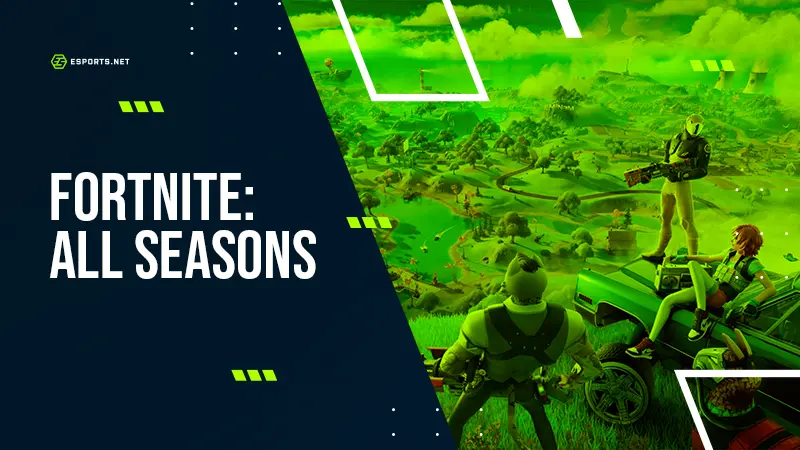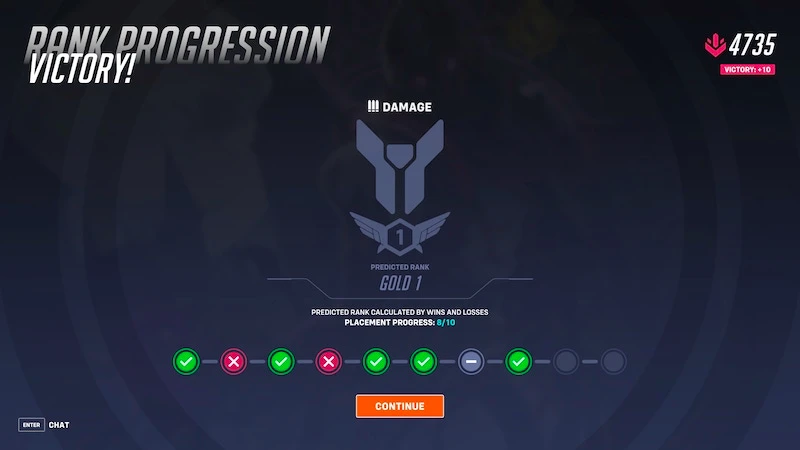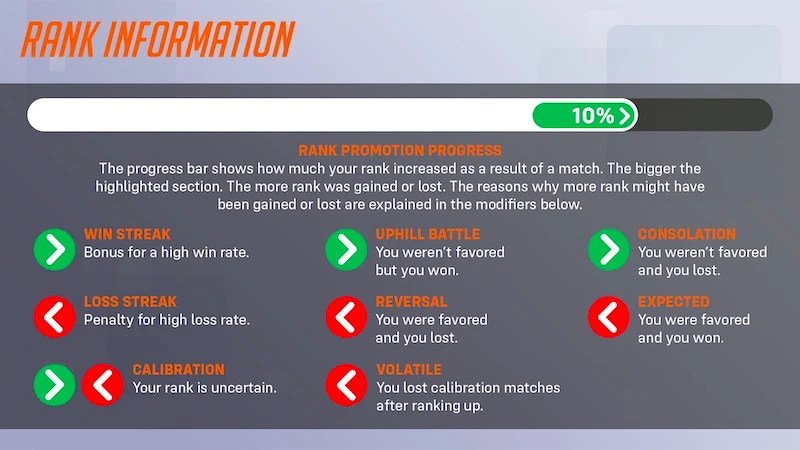
Overwatch Ranking System – How do ranks work in Overwatch?
Quick play is fun, but for most players, competitive mode is the main appeal of Overwatch. The competitive Overwatch ranks let you play with other skilled players and measure your progress. Each season players grind to try and finally make it to Grandmaster or even Top 500. That grind up the Overwatch 2 ranks is central to a lot of players, it’s what makes the game so much fun. The Overwatch 2 ranking system has a few quirks though, especially since its controversial revamp this year.
This is what you need to know about the Overwatch 2 ranking system. This is how the Overwatch ranks work, how many ranks there are, and how the new rewards can be unlocked.
Overwatch 2 Ranks Explained
The Overwatch Ranking System has had major changes with the most recent OW season. The new ranking system is clearer than the old one. When you finish a game, you’ll see a screen which shows your progress up or down.
You’ll be able to directly see your progression towards the next rank based on your own performance. It’s considerably easier to understand than the old system, but it has led to a lot of players getting stuck in one rank or another.
These are all of the ranks you’ll need to progress through in the Overwatch ranking system.

Source: Blizzard
Overwatch 2 Ranks in Order
-
Bronze
-
Silver
-
Gold
-
Platinum
-
Diamond
-
Master
-
Grandmaster
-
Top 500
Most of the Overwatch ranks system’s tiers are simple, but Top 500 is a bit more complicated. This is more of an achievement or title than a specific rank. Top 500 players are exactly what the name says, they are the top 500 players in the game. It’s better to think of it as the top end of players or a leaderboard, not a specific rank that you enter. Most of the players you see in Overwatch tournaments are probably top 500 level though.
It’s also worth noting that the Overwatch 2 ranks aren’t all the same size. Most players are around the Silver, Gold, and Platinum levels. This makes these the quickest ranks to get matchmaking in, but also trickier to rise out of.
How much you go up or down in the Overwatch 2 ranking system is determined by your performance, but also new rank modifiers.
Overwatch 2 Rank Modifiers
When you finish a competitive game of Overwatch, you’ll get to see your progress. This progress can be faster or slower depending on factors outside of your most recent game. These are the factors that the game uses to decide your rank.
- Win Streak – Winning consecutively
- Loss Streak – Losing consecutively
- Calibration – When your rank is not decided yet
- Uphill Battle – A bad setup, where you still managed to win despite a disadvantage
- Reversal – You were expected to win, but didn’t
- Volatile – If you’re underperforming after the calibration modifier
- Expected – Winning when you were expected to win
- Demotion Protection – Close to a demotion

Source: Blizzard
Each of these modifiers will mean you’re gaining or dropping quicker. After each game, you’ll get a solid representation of how close or far you are from the next Overwatch 2 rank though. These are for your general account, and not specific to any Overwatch 2 hero. Although, with different roles, you’ll see a different modifier.
What Changes Your Rank?
How exactly is your progress through the ranks worked out? There are a few factors, and the system is now a lot clearer. A lot of it seems to come down to how you were matched up in the game originally. If you were on a stronger team or in a better position, the game expects you to win. Whereas winning a game it expects you to lose can make a bigger difference to your rank.
The new system aims to give more clarity in how your rank works. You are still limited by your team. Ultimately Overwatch 2 is a team game. That’s true in comp, quick play, even the new Overwatch Champion Series. While that can be frustrating, the modifiers should let you know how your team’s ranks effected your own score too.

MMR and Matchmaking in Overwatch 2 Ranking System
At the beginning of Overwatch 2, you’ll need to play different matches to start getting a score. This builds up your matchmaking rank or your MMR. This is a score that determines who you’re playing with, you’re grouped into a lobby with those who have a similar score.
Your MMR is a bit more frustrating than the straight Overwatch 2 ranks. This is decided by your game and how you perform, but there isn’t a clear scoring system. Even if your actual rank in MMR isn’t public, it’s all a secret for the most part. Although, we do know that your MMR will decrease if you don’t play for a while. It’s this rating that generally keeps you tied to similar ranks in the Overwatch player base.
Rewards in Overwatch Ranking System
The Overwatch ranking system isn’t just for bragging rights, you get some rewards. There are fresh rewards here for the new ranking system introduced in Season 9. Playing competitive Overwatch in each season gets you CP. This is awarded after each win, with a different amount depending on where you are in the competitive Overwatch ranks.
CP can be traded in to get the new Jade weapon skins. This is only available with 2024 CP right now. Next year a new set will be introduced and your current CP will become Legacy CP. The amount you earn is set by the result of a match.
- Win – 10 CP
- Draw – 5 CP
- Loss – 0 CP
That’s how all of the Overwatch 2 ranking system works. It’s pretty easy to keep track of but tricky to actually progress through! To get into the higher ranks each season you really need to prove you’re one of the top players in the game that season. Even the best Overwatch players still have to grind up to that level and the new ranking system does seem to slow you down in higher ranks quite a lot.












